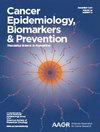Development of a breast cancer risk prediction model integrating monogenic, polygenic, and epidemiologic risk
IF 3.7
3区 医学
Q2 ONCOLOGY
引用次数: 0
Abstract
Background: Breast cancer has been associated with monogenic, polygenic, and epidemiologic (clinical, reproductive and lifestyle) risk factors, but studies evaluating the combined effects of these factors have been limited. Methods: We extended previous work in breast cancer risk modeling, incorporating pathogenic variants (PV) in six breast cancer predisposition genes and a 105-SNP polygenic risk score (PRS), to include an epidemiologic risk score (ERS) in a sample of non-Hispanic White women drawn from prospective cohorts and population-based case-control studies, with 23,518 cases and 22,832 controls, from the Cancer Risk Estimates Related to Susceptibility (CARRIERS) Consortium. Results: The model predicts 4.4-fold higher risk of breast cancer for postmenopausal women with no predisposition PV and median PRS, but with the highest versus lowest ERS. Overall, women with CHEK2 PVs had >20% lifetime risk of breast cancer. However, 15.6% of women with CHEK2 PVs and a family history of breast cancer, and 45.1% of women with CHEK2 PVs but without a family history of breast cancer, had low (<20%) predicted lifetime risk and thus were below the threshold for MRI screening. CHEK2 PV carriers at the 10th percentile of the joint distribution of ERS and PRS, without a family history of breast cancer, had a predicted lifetime risk similar to the general population. Conclusions: These results illustrate that an ERS, alone and combined with the PRS, can contribute to clinically relevant risk stratification. Impact: Integrating monogenic, polygenic, and epidemiologic risk factors in breast cancer risk prediction models may inform personalized screening and prevention efforts.开发整合单基因、多基因和流行病学风险的乳腺癌风险预测模型
背景:乳腺癌与单基因、多基因和流行病学(临床、生殖和生活方式)风险因素有关,但评估这些因素综合影响的研究还很有限。研究方法我们扩展了以前的乳腺癌风险建模工作,将六个乳腺癌易感基因中的致病变异体(PV)和 105-SNP 多基因风险评分(PRS)纳入其中,并将流行病学风险评分(ERS)纳入癌症风险评估易感性(CARRIERS)联盟从前瞻性队列和基于人群的病例对照研究中抽取的非西班牙裔白人女性样本中,其中有 23,518 例病例和 22,832 例对照。研究结果该模型预测绝经后妇女罹患乳腺癌的风险比无易感性PV和中位PRS的妇女高4.4倍,但ERS最高与最低。总体而言,具有 CHEK2 PV 的妇女一生中患乳腺癌的风险为 >20% 。然而,在有乳腺癌家族史的CHEK2 PV女性中,有15.6%的人有乳腺癌家族史;在有乳腺癌家族史的CHEK2 PV女性中,有45.1%的人没有乳腺癌家族史,她们的预测终生乳腺癌风险较低(<20%),因此低于磁共振成像筛查的阈值。处于ERS和PRS联合分布第10百分位的CHEK2 PV携带者,如果没有乳腺癌家族史,其预测终生风险与普通人群相似。结论:这些结果表明,ERS(单独或与 PRS 结合)有助于临床相关的风险分层。影响:在乳腺癌风险预测模型中整合单基因、多基因和流行病学风险因素可为个性化筛查和预防工作提供依据。
本文章由计算机程序翻译,如有差异,请以英文原文为准。
求助全文
约1分钟内获得全文
求助全文
来源期刊

Cancer Epidemiology Biomarkers & Prevention
医学-公共卫生、环境卫生与职业卫生
CiteScore
6.50
自引率
2.60%
发文量
538
审稿时长
1.6 months
期刊介绍:
Cancer Epidemiology, Biomarkers & Prevention publishes original peer-reviewed, population-based research on cancer etiology, prevention, surveillance, and survivorship. The following topics are of special interest: descriptive, analytical, and molecular epidemiology; biomarkers including assay development, validation, and application; chemoprevention and other types of prevention research in the context of descriptive and observational studies; the role of behavioral factors in cancer etiology and prevention; survivorship studies; risk factors; implementation science and cancer care delivery; and the science of cancer health disparities. Besides welcoming manuscripts that address individual subjects in any of the relevant disciplines, CEBP editors encourage the submission of manuscripts with a transdisciplinary approach.
 求助内容:
求助内容: 应助结果提醒方式:
应助结果提醒方式:


